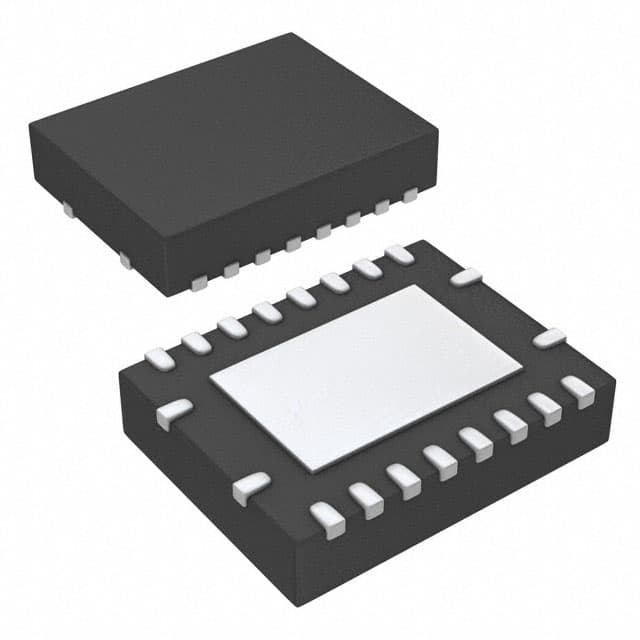Viz Specifikace pro podrobnosti o produktu.

SN74LV244ATRGYRG4
Product Overview
- Category: Integrated Circuit (IC)
- Use: Buffer/Line Driver
- Characteristics: High-Speed, Low-Voltage, Octal Buffer/Line Driver
- Package: 20-TSSOP (Thin Shrink Small Outline Package)
- Essence: The SN74LV244ATRGYRG4 is a high-speed octal buffer/line driver designed for low-voltage applications. It provides eight non-inverting buffers with 3-state outputs.
- Packaging/Quantity: The SN74LV244ATRGYRG4 is available in tape and reel packaging, with 2500 units per reel.
Specifications
- Supply Voltage Range: 1.65V to 5.5V
- Input Voltage Range: 0V to VCC
- Output Voltage Range: 0V to VCC
- Operating Temperature Range: -40°C to +85°C
- Propagation Delay Time: 6.2ns (typical) at 3.3V supply voltage
- Output Drive Capability: ±24mA at 3.3V supply voltage
Detailed Pin Configuration
The SN74LV244ATRGYRG4 has a total of 20 pins, which are assigned as follows:
- A1: Input 1
- Y1: Output 1
- A2: Input 2
- Y2: Output 2
- A3: Input 3
- Y3: Output 3
- GND: Ground
- Y4: Output 4
- A4: Input 4
- Y5: Output 5
- A5: Input 5
- Y6: Output 6
- A6: Input 6
- Y7: Output 7
- A7: Input 7
- Y8: Output 8
- OE: Output Enable
- VCC: Supply Voltage
- GND: Ground
- A8: Input 8
Functional Features
- High-speed operation, suitable for applications requiring fast signal transmission.
- Low-voltage operation, compatible with a wide range of low-power devices.
- Octal buffer/line driver configuration, providing eight independent buffers.
- 3-state outputs allow for easy bus sharing and interfacing with multiple devices.
Advantages and Disadvantages
Advantages: - High-speed operation enables efficient data transfer. - Low-voltage compatibility makes it suitable for various low-power applications. - Octal configuration provides multiple independent buffers. - 3-state outputs allow for flexible bus sharing.
Disadvantages: - Limited output drive capability compared to some other buffer/line driver ICs. - Not suitable for high-voltage applications.
Working Principles
The SN74LV244ATRGYRG4 operates by receiving input signals on its eight input pins (A1-A8). These input signals are then buffered and amplified by the internal circuitry. The resulting output signals (Y1-Y8) are driven to the corresponding output pins.
The output enable pin (OE) controls the state of the outputs. When OE is low, the outputs are enabled and reflect the input signals. When OE is high, the outputs are in a high-impedance state, allowing for bus sharing or isolation.
Detailed Application Field Plans
The SN74LV244ATRGYRG4 is commonly used in various electronic systems and applications, including:
- Data communication systems
- Microprocessor-based systems
- Industrial automation equipment
- Automotive electronics
- Consumer electronics
In data communication systems, the SN74LV244ATRGYRG4 can be used to buffer and amplify signals between different components, ensuring reliable data transmission.
In microprocessor-based systems, it can be employed to interface between the microprocessor and other peripheral devices, enabling efficient data transfer.
In industrial automation equipment, the IC can be utilized for signal conditioning and driving various actuators or sensors.
In automotive electronics, it can be integrated into control modules to facilitate signal buffering and interfacing between different subsystems.
In consumer electronics, it can be employed in applications such as LCD displays, audio amplifiers, and digital interfaces.
Detailed and Complete Alternative Models
- SN74LV244A: Similar to SN74LV244ATRGYRG4 but available in different package options.
- SN74LVC244A: Low-Voltage CMOS Octal Buffer/Line Driver with 3-State Outputs.
- SN74HCT244: High-Speed CMOS Octal Buffer/Line Driver with 3-State Outputs.
- SN74HC244: High-Speed CMOS Octal Buffer/Line Driver
Seznam 10 běžných otázek a odpovědí souvisejících s aplikací SN74LV244ATRGYRG4 v technických řešeních
Sure! Here are 10 common questions and answers related to the application of SN74LV244ATRGYRG4 in technical solutions:
Q: What is SN74LV244ATRGYRG4? A: SN74LV244ATRGYRG4 is a specific model of octal buffer/driver integrated circuit (IC) manufactured by Texas Instruments.
Q: What is the purpose of SN74LV244ATRGYRG4? A: SN74LV244ATRGYRG4 is used to provide buffering and driving capabilities for digital signals in various electronic circuits.
Q: What is the voltage range supported by SN74LV244ATRGYRG4? A: SN74LV244ATRGYRG4 supports a voltage range of 1.65V to 5.5V, making it compatible with a wide range of digital systems.
Q: How many channels does SN74LV244ATRGYRG4 have? A: SN74LV244ATRGYRG4 has 8 channels, allowing it to handle 8 separate digital signals simultaneously.
Q: What is the maximum output current of SN74LV244ATRGYRG4? A: The maximum output current per channel of SN74LV244ATRGYRG4 is typically 12mA, ensuring reliable signal transmission.
Q: Can SN74LV244ATRGYRG4 be used for bidirectional communication? A: No, SN74LV244ATRGYRG4 is unidirectional and can only drive signals from its inputs to outputs.
Q: What is the propagation delay of SN74LV244ATRGYRG4? A: The typical propagation delay of SN74LV244ATRGYRG4 is around 5.8ns, which is the time it takes for a signal to propagate through the IC.
Q: Is SN74LV244ATRGYRG4 compatible with TTL logic levels? A: Yes, SN74LV244ATRGYRG4 is designed to be compatible with both TTL and CMOS logic levels, making it versatile in various applications.
Q: Can SN74LV244ATRGYRG4 handle high-speed signals? A: Yes, SN74LV244ATRGYRG4 is capable of operating at high speeds, with a maximum frequency of typically 100MHz.
Q: What package does SN74LV244ATRGYRG4 come in? A: SN74LV244ATRGYRG4 is available in a small-outline integrated circuit (SOIC) package, specifically the SOIC-20 package.
Please note that the answers provided here are general and may vary depending on specific datasheet specifications or application requirements.

